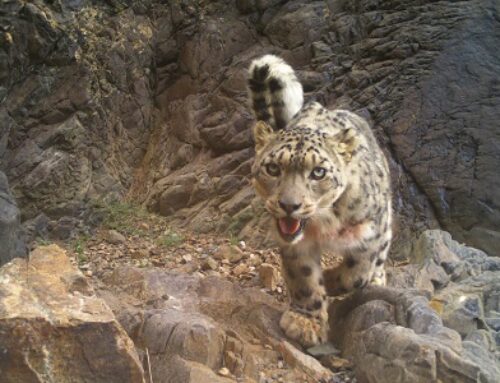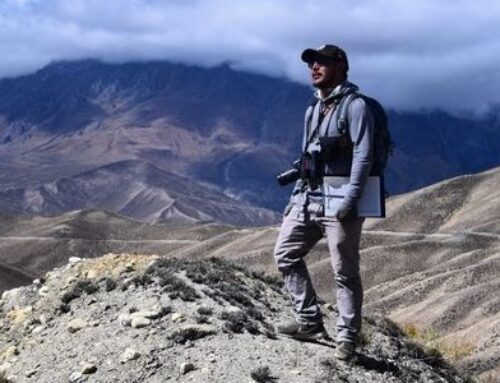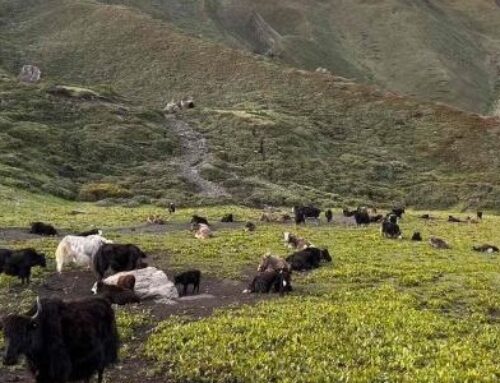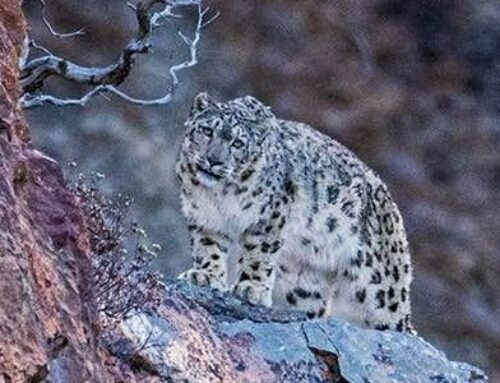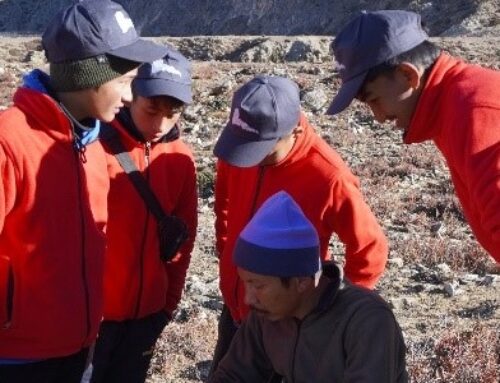Feature Photo – BWCDO
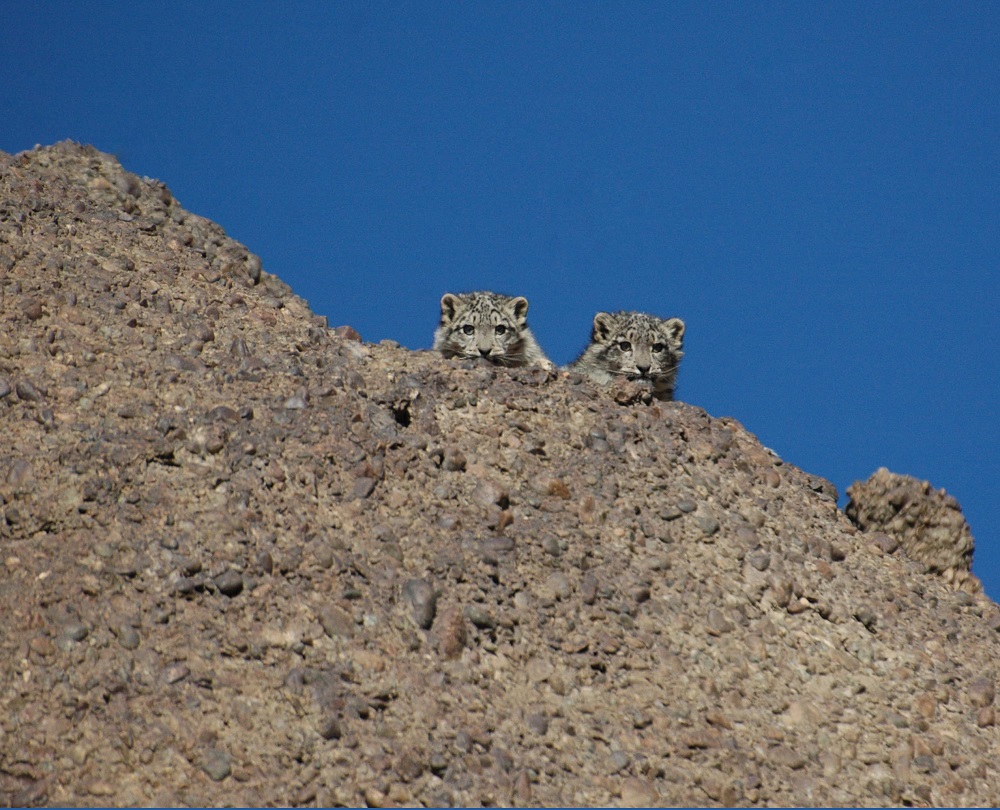
Photo – Tulgazana Darikhuu
We are excited to present our 2019 Annual Report in a fun new flipbook format. It’s filled with news from the Land of the Snow Leopard Network and of snow leopard festivals and educational workshops, and it explores the strides we’re making in capacity building with the local communities and reducing human-wildlife conflict. Here are some of the highlights —
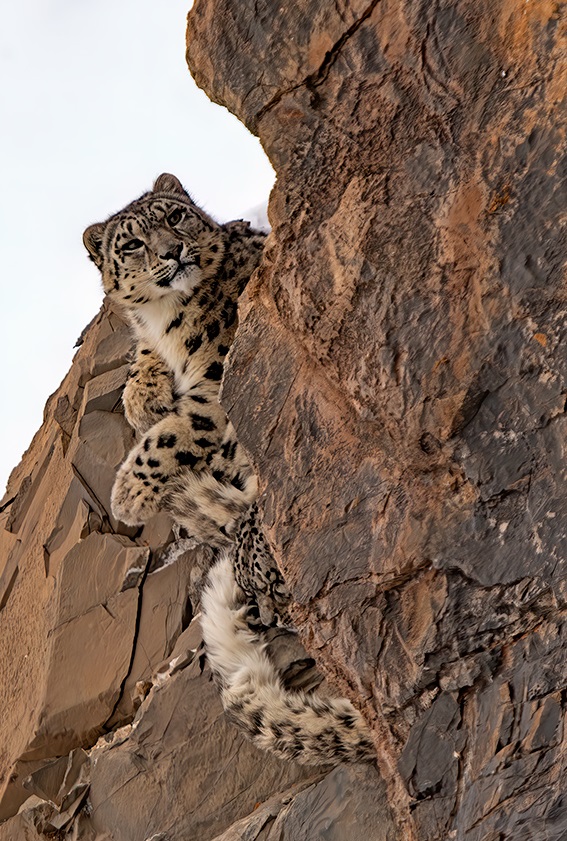
Vikram Singh – Wild World India
Impacts
2000 children and adults, including girls for whom education is often unavailable, participated in Conservancy- supported education programs.
200 camera-trap images of snow leopards were captured by Conservancy partners in Pakistan providing a clearer look at the cats’ population, habitat use, and diet.
8 incidents of snow leopards being released back into the wild in Tajikistan since the Land of the Snow Leopard Network (LOSL) began conservation education in that region. The eight cats had been caught killing livestock.
All 5 Land of the Snow Leopard Network regions initiated education and conservation action programs, building on the mutual trust and confidence built over the past seven years.
157 Foxlights were provided to Conservancy partners in Bhutan, China, Mongolia, and Nepal. These solar-powered devices flash colored lights that deter predators from attacking livestock.
Protecting Snow Leopards Through Capacity Building
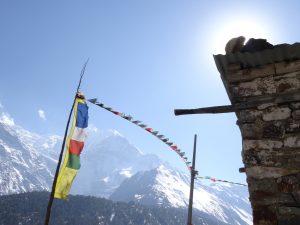
Photo: SLC
Nepal’s region of Nar-Phu contains some of the country’s best habitat for snow leopards and their wild prey, blue sheep. Nar-Phu villagers lose an average of 2-4 livestock per household annually, an estimated economic impact of $489–$766 per household. Darwin Initiative funding enabled the Conservancy and our partner, Mountain Spirit, to train members of the local municipality to ensure environmental safeguarding in planning new income-generating activities and to assist villagers in diversifying their livelihoods. More than half the participants were women.
The Conservancy continues to utilize trail cameras and other technologies in building the capacity of communities to be the frontline guardians of their wildlife heritage. With better income generation, along with good animal husbandry and measures such as Foxlights to control depredation, communities can tolerate some loss of livestock to snow leopards.
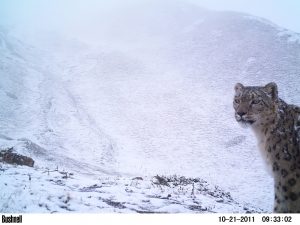
Lights for Life: Reducing Human-Wildlife Conflict
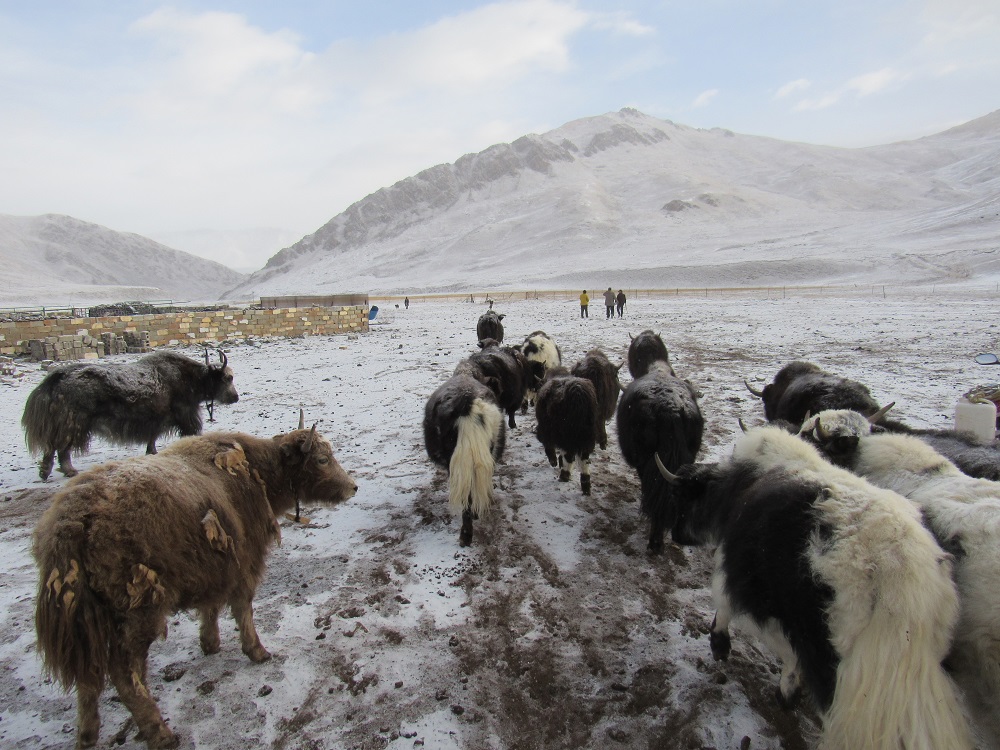
Photo: Charlotte Hacker
Working with Duquesne University scientists and local herders, the Conservancy is analyzing snow leopard scats to determine snow leopard diet and dependence on livestock. Molecular genetics and herders’ experience and knowledge reveal important patterns of livestock depredation.
The team, including the Chinese Academy of Forestry and local forest officials, evaluated the effectiveness of Foxlights (yellow device at right) for deterring snow leopards and other predators from approaching livestock at night, when most losses occur. Besides sheep and goats, domestic yaks, especially the young, are vulnerable to snow leopard depredation. The Foxlights are effective; herders have asked us for more.
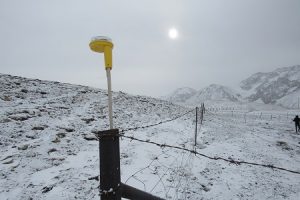
Photo: Charlotte Hacker
Snow Leopard Day Festivals and Educational Workshops
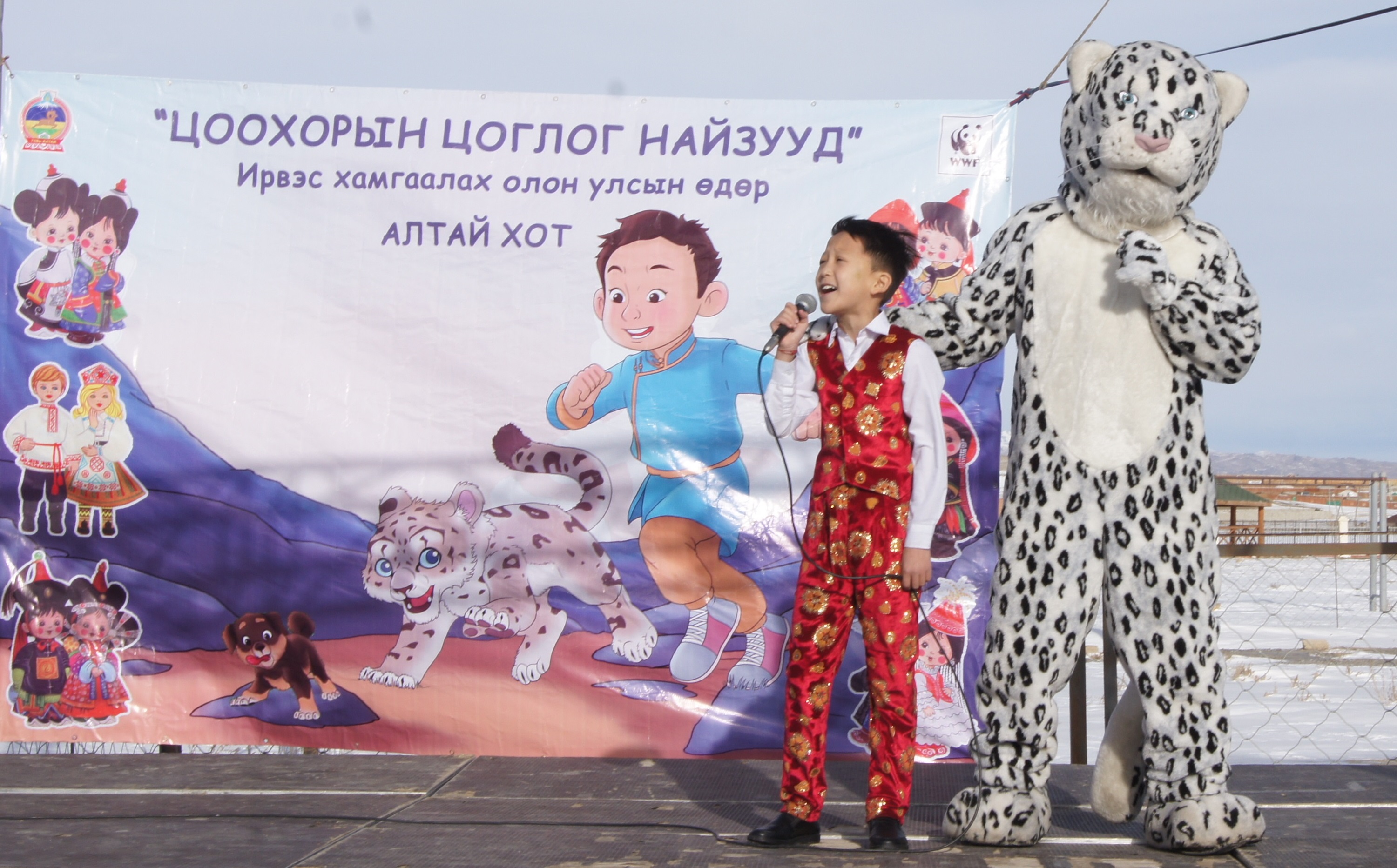
Photo: Lyubov Ivashkina
The Conservancy supported Snow Leopard Day festivals in Mongolia, Nepal, and Pakistan. Over one thousand children and community members learned about the high mountain ecosystem and the importance of predators in the environment.
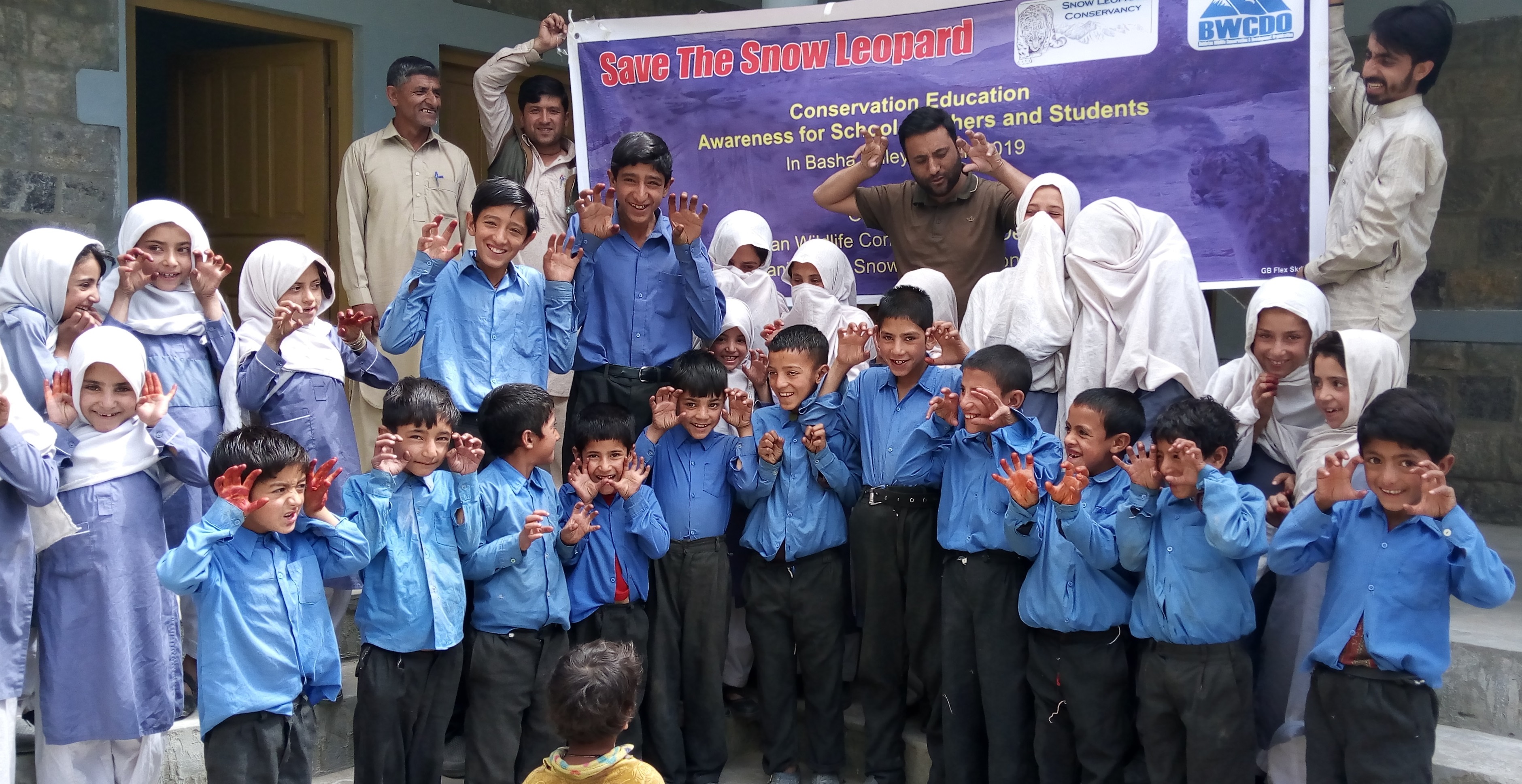
Photo: BWCDO
The Baltistan Wildlife Conservation and Development Organization (BWCDO) conducts workshops for teachers and students, especially encouraging girls’ participation to raise awareness and advocacy for snow leopard conservation.
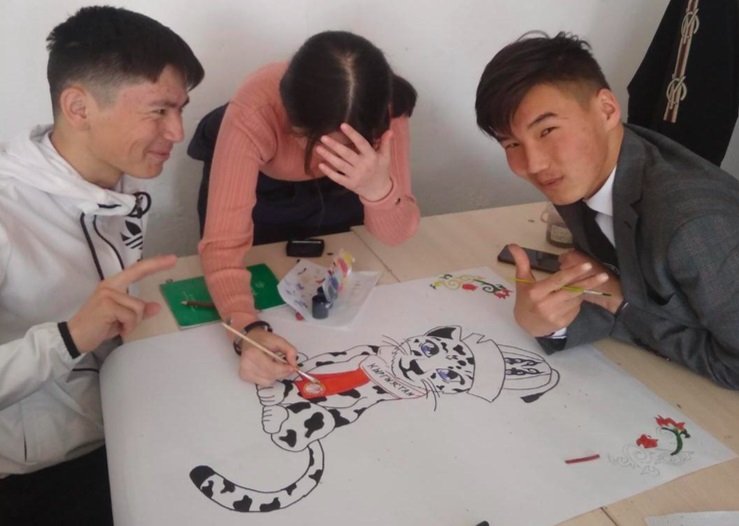
Photo: LOSL
Land of the Snow Leopard Network
The 100+ members of the Land of the Snow Leopard (LOSL) Network represent the Altai and Buryat Republics of Russia, Kyrgyzstan, Mongolia, and Tajikistan. LOSL is guided by shamans, sacred site guardians, and revered elders. These spiritual leaders have begun to develop and implement conservation education and action plans aimed at revitalizing traditional practices.
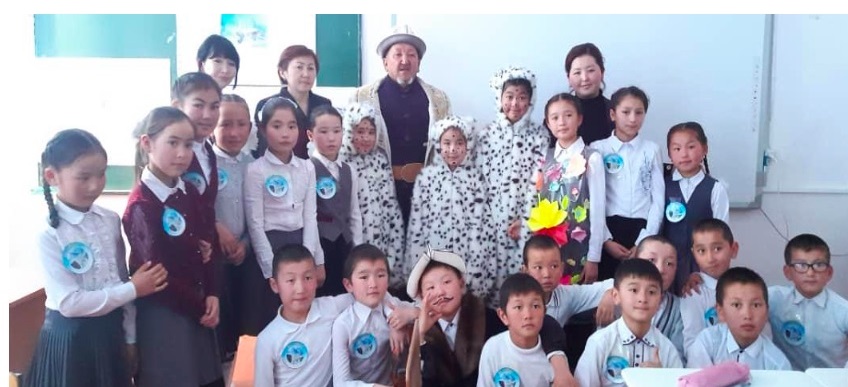
Photo: LOSL
Zhaparkul Raimbekov (above, back row, center) developed the Elders and Youth for Conservation of the Snow Leopard campaign. He brought together cultural practitioners and youth to share traditional knowledge about snow leopards and their habitat. This campaign was featured in local media and national television and led to requests by communities, including high school students, for Zhaparkul to continue teaching about sacred animals, traditions, and about their ancestral roots.
Zhaparkul and his team employed elements of Nomadic Nature Trunks, a Conservancy-supported education program started in 2011 in Mongolia. These classrooms-in-a-trunk have lesson plans and materials to teach children about their environment. LOSL members unanimously agreed that Nature Trunks should be expanded—with the addition of materials focused on the sacred nature of snow leopards and their role in traditional life—into all their regions as an LOSL program.
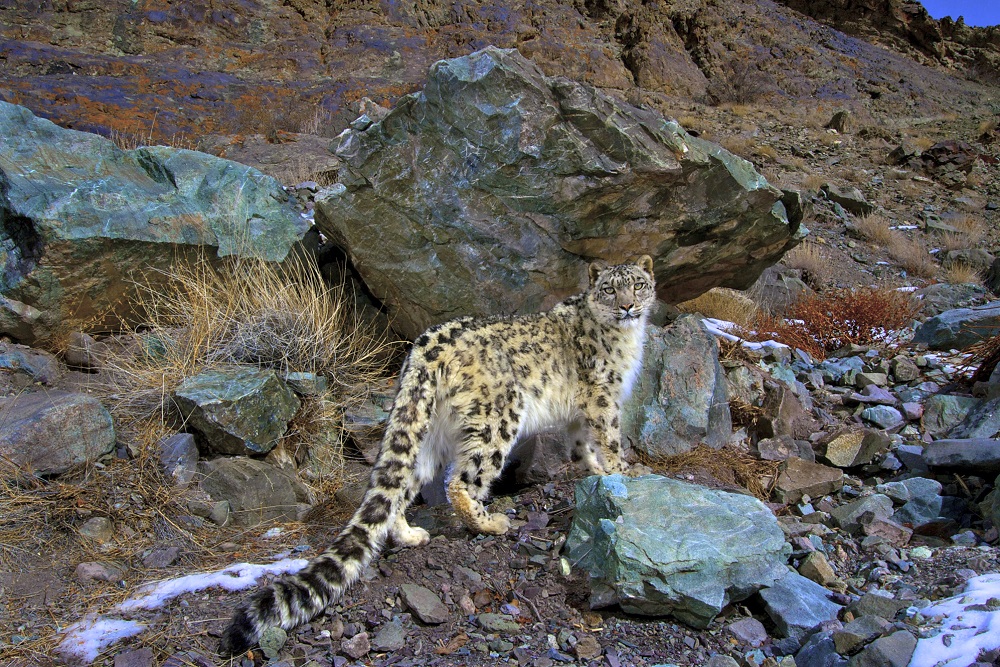
Photo: Steve Winter
In Tajikistan, LOSL Country Coordinator Qurbon Alamshoev has spearheaded annual festivals as a way of transferring to local communities traditional knowledge about the Pamir Mountain ecology and ancient taboos against killing sacred animals.
Qurbon describes how these festivals have been largely responsible for a remarkable outcome — Between 2015 and October 2019, eleven snow leopards were forgiven by Pamiri communities for livestock raiding and released back into the habitat. I believe that in none of the twelve snow leopard range countries has there been such humane action.
The Story of Our Cover
Tulgazana Darikhuu is a Mongolian herder and Land of the Snow Leopard Network Community Coordinator. He lives in the Gobi Desert near snow leopard habitat. He told us that he first understood the need to protect snow leopards in the wild when he saw one in a zoo in the U.S. He needed a camera to try to photograph the cats he occasionally saw when out with his herds, but he had no money. He did have a motorcycle; so he sold it and took his new camera into the mountains with his sheep and goats. He’d made a special disguise to wear so any snow leopard that came along might think he was just a shaggy cow. One day, he somehow spotted the two cubs shown on our cover; they were waiting for their mother. One was very shy, but the other was very curious about him and what he was up to. He presented the photo at our 2019 Land of Snow Leopard gathering.
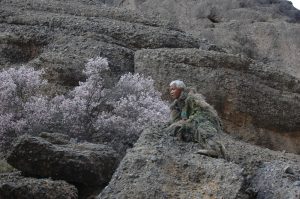
Message from the Founder-Director

There’s a recurring maxim in the work of saving snow leopards: conservation needs sustained effort to take proper root. So many of you, our long-term donors, have given more than funding; through your steady support and trust, you’ve given us the gift of time to transform community capacity for protecting environmental and cultural values. Thank you!
Two important programs were initiated in 2019 following the seventh annual Land of the Snow Leopard Network (LOSL) gathering. LOSL members elected to expand Nomadic Nature Trunks into our five program areas, under the dynamic leadership of Tunga Khuukhenduu. The Conservancy has supported Tunga’s snow leopard trunk program in Mongolia since 2011. In 2015, she received a Disney Conservation Hero Award.
Zhaparkul Raimbekov is guardian of a sacred site in Kyrgyzstan’s mountains. He is also a Batachy (Giver of Blessings). As a spiritual leader, Zhaparkul had never worked under the requirements of a western grant. During our LOSL gathering he developed a very clear vision of how he and a team of indigenous cultural practitioners could mount a campaign to engage elders and students in reviving traditional knowledge of the sacredness of the snow leopard. See pages 8-9 for more impacts from this community-based program that has grown so remarkably since 2013.
In Nepal’s Himalaya, on-going political changes contribute to the long-term progress of snow leopard conservation. We work proactively with Mountain Spirit to strengthen local government capacity and community partnerships, linking conservation with new, enhanced and diversified livelihoods, like livestock veterinary outreach and establishment of the Snow Leopard Trail.
We continued training young biologists and citizen scientists to utilize new technologies in conservation-related research. In Mongolia, we demonstrated that drones with infrared, temperature-sensing cameras are more accurate than ground surveys for counting wild prey of snow leopards. See Ghost of the Gobi, a short video documenting this effort. In Pakistan and China, our partners continue to refine non-invasive methods for cataloging snow leopard diet from scats.
Time, continuity, and the gift of your donor dollars have made the difference in bringing conservation education to children in Central Asia and in our ability to mentor the next generation of snow leopard conservationists.
Thank you!
Rodney Jackson
Founder-Director

